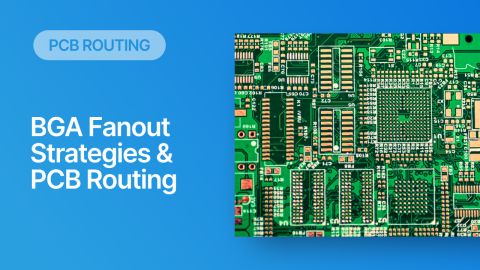Using the Properties Panel for PCB Routing in Altium Designer

Routing is one of the most time-consuming stages of PCB design. Altium Designer has a large set of tools that allow you to do it as accurately and quickly as possible. This document will help you to learn how to manage your routing effectively and use it to its fullest extent.
The basis of PCB topology development in Altium Designer. By offering powerful routing tools, the system provides comprehensive settings. All groups of settings are arranged in accordance with the logic of the tool, as well as have context-dependent representation.
Properties panel overview
The properties panel automatically changes when a user activates the Interactive Trace feature to display the appropriate settings. The panel consists of several sections:
“Net information” section
Single-track routing
In the Net Information section for single-track routing, the following parameters are displayed:
Diff pair routing
For Diff Pair routing in the Net Information section a user can see the following parameters:
“Properties” section
Single-track routing
Diff pair routing
Multi-routing
Layer change
When you change layer, the Properties section will display detailed information about the configuration of the current via
“Interactive routing options” section
“Rules” section

About Author
About Author
Zachariah Peterson has an extensive technical background in academia and industry. He currently provides research, design, and marketing services to companies in the electronics industry. Prior to working in the PCB industry, he taught at Portland State University and conducted research on random laser theory, materials, and stability. His background in scientific research spans topics in nanoparticle lasers, electronic and optoelectronic semiconductor devices, environmental sensors, and stochastics. His work has been published in over a dozen peer-reviewed journals and conference proceedings, and he has written 2500+ technical articles on PCB design for a number of companies. He is a member of IEEE Photonics Society, IEEE Electronics Packaging Society, American Physical Society, and the Printed Circuit Engineering Association (PCEA). He previously served as a voting member on the INCITS Quantum Computing Technical Advisory Committee working on technical standards for quantum electronics, and he currently serves on the IEEE P3186 Working Group focused on Port Interface Representing Photonic Signals Using SPICE-class Circuit Simulators.
Related Resources
Related Technical Documentation
Altium is transforming the electronics industry so thoroughly that our web pages need a minute to catch up. For a short time, some information on this page may be outdated.
We appreciate your patience. It will be worth the wait!
Learn More










